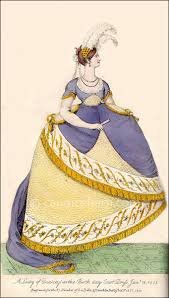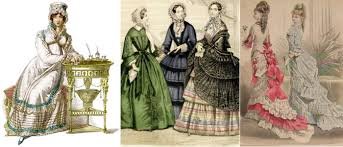
The Regency Era is a distinctive period in British history that lasted from 1811 to 1820, marked by significant cultural, social, and political changes. This era, characterized by its unique fashion, literature, and shifting social norms, serves as a fascinating backdrop to the development of modern British identity. In this article, we will explore the multifaceted aspects of the Regency Era, including its historical context, societal structures, cultural contributions, and enduring legacy.
Table of Contents
Historical Context of the Regency Era
The Regency Era emerged in the wake of significant turmoil. The period was defined by the Napoleonic Wars, which had far-reaching effects on British society and politics. As King George III faced health issues, his son George IV assumed the role of regent. This time of instability led to a complex interplay of political reform, economic hardship, and social change.
During the Regency Era, Britain was grappling with the consequences of war. The economy suffered due to high taxes and inflation, leading to widespread discontent among the populace. Food shortages were common, prompting protests and calls for reform. The era also witnessed the rise of the middle class, who began to challenge the traditional power of the aristocracy, reshaping the social landscape.
As we examine the Regency Era, it becomes evident that the period set the stage for significant social movements and transformations that would continue into the Victorian era and beyond.
The Impact of the Industrial Revolution
The Regency Era coincided with the early stages of the Industrial Revolution, which fundamentally altered British society. The shift from agrarian economies to industrialized urban centers changed the way people lived and worked. Factories emerged, and many people migrated from rural areas to cities in search of employment.
This rapid urbanization led to significant social changes. The working class faced harsh conditions, often living in overcrowded and unsanitary environments. However, the growth of industry also contributed to the rise of the middle class, who sought to establish their own social identity and assert their influence in society.
The Regency Era was a time of great economic and social upheaval, with both challenges and opportunities arising from the changing landscape. The interplay between the traditional aristocracy and the burgeoning middle class set the stage for future social dynamics.
Fashion and Society in the Regency Era

Fashion during the Regency Era is one of the most celebrated aspects of this period. The styles of clothing reflected broader social changes and were indicative of personal identity and status. Women’s fashion was characterized by high-waisted gowns known as “Empire line” dresses, which emphasized a natural silhouette and were often made from light fabrics like muslin.
These gowns were typically adorned with delicate embroidery and intricate designs, showcasing the wearer’s taste and social standing. Accessories such as shawls, bonnets, and gloves complemented the outfits, highlighting the era’s focus on elegance and refinement.
Men’s fashion also underwent a transformation during the Regency Era. Tailcoats became increasingly popular, often tailored to create a sharp and dapper appearance. Cravats and waistcoats were essential components of a gentleman’s wardrobe, reflecting the period’s emphasis on propriety and decorum.
The fashion of the Regency Era was not just about clothing; it was a manifestation of social dynamics and aspirations. Attending balls and social events provided opportunities for individuals to showcase their status and engage in the intricate dance of social interactions.
Literary Achievements of the Regency Era
The Regency Era is often celebrated for its remarkable literary contributions, with many notable authors emerging during this time. Jane Austen stands out as a defining voice of the period. Her novels, including “Pride and Prejudice,” “Sense and Sensibility,” and “Emma,” explore the complexities of social relationships, particularly those of women navigating societal expectations.
Austen’s keen observations and wit provide insight into the challenges faced by women during the Regency Era. Her characters grapple with issues of class, marriage, and independence, making her works timeless and relevant.
In addition to Austen, the Regency Era produced influential poets such as Lord Byron and Percy Bysshe Shelley. Byron’s passionate and often tumultuous works, including “Childe Harold’s Pilgrimage,” reflected the Romantic ideals of the time, emphasizing emotion and individualism.
The emergence of Gothic literature during the Regency Era also had a profound impact on the literary landscape. Mary Shelley’s “Frankenstein,” published in 1818, explored themes of ambition and the ethical dilemmas of scientific progress, reflecting the anxieties of the era.
These literary achievements illustrate the richness of the Regency Era and its lasting influence on English literature.
The Role of Women in the Regency Era
Women in the Regency Era occupied a complex position within society. While traditional gender roles largely confined women to the domestic sphere, the era also witnessed the emergence of strong female voices in literature and social discourse. The concept of the “accomplished woman” became prominent, emphasizing skills in music, art, and literature as desirable traits for marriage.
Despite societal constraints, women like Austen and Shelley challenged the limitations imposed upon them through their writing. They used their talents to critique societal norms and advocate for greater autonomy and representation.
Social gatherings and salons provided women with opportunities to engage in intellectual discourse and cultural life. These gatherings became spaces for discussing literature, politics, and the arts, allowing women to assert their influence and contribute to the cultural landscape of the Regency Era.
Political Landscape of the Regency Era

The Regency Era was marked by significant political turmoil and reform movements. The aftermath of the Napoleonic Wars led to widespread unrest and calls for change. The Peterloo Massacre of 1819, where a peaceful protest for reform turned violent, highlighted the tensions between the government and the working class.
During this period, reform movements began to gain traction. Activists and reformers advocated for political representation, improved working conditions, and an end to oppressive laws. These efforts laid the groundwork for future political changes, as the Regency Era sparked discussions about democracy and social justice.
The period also saw the emergence of influential political thinkers who challenged the status quo. Figures like William Cobbett and Thomas Paine wrote extensively on the need for reform, advocating for the rights of the common man. Their ideas and writings resonated with a populace eager for change.
The Regency Era was a time of transformation, as the struggle for representation and social equity became increasingly prominent in British society.
Architectural Developments in the Regency Era
The Regency Era was also notable for its architectural advancements. The neoclassical style, characterized by symmetry and grand proportions, dominated the architectural landscape. Architects like John Nash and Robert Adam played significant roles in shaping the built environment of the time.
Nash, for instance, is known for his work on Regent Street and the redesign of the area surrounding Regent’s Park. His designs exemplified the ideals of the Regency Era, blending functionality with aesthetic appeal. The elegant crescents and terraces constructed during this period reflected the aspirations of a society in transition.
The Regency Era also saw the construction of iconic structures, such as the Brighton Pavilion. This exotic building, with its Indian-inspired architecture, illustrated the era’s fascination with cultural diversity and artistic experimentation.
These architectural developments not only enhanced the urban landscape but also contributed to the cultural identity of the Regency Era.
The Arts and Cultural Life in the Regency Era
The Regency Era was a vibrant time for the arts, encompassing painting, music, and theater. The period saw the rise of notable artists and composers who made significant contributions to British culture. J.M.W. Turner and John Constable, for example, captured the beauty of the English landscape through their evocative paintings, celebrating nature’s power and grandeur.
In music, composers like Ludwig van Beethoven and Johann Strauss were influential, as their works resonated with the ideals of Romanticism that permeated the Regency Era. Music became an essential part of social gatherings, with both classical performances and popular songs reflecting the era’s tastes and values.
The theater flourished during the Regency Era, with playwrights like Richard Brinsley Sheridan producing significant works. The performances often addressed contemporary issues and provided commentary on society, creating a space for both entertainment and social critique.
Cultural events, such as exhibitions and fairs, also gained popularity, showcasing the artistic achievements of the time. These gatherings fostered a sense of community and encouraged the exchange of ideas, contributing to the rich tapestry of cultural life in the Regency Era.
The Legacy of the Regency Era
The Regency Era left an indelible mark on British culture and society. Its influences can be seen in literature, fashion, architecture, and political thought. The period set the stage for the Victorian Age, as the social and cultural changes initiated during the Regency Era continued to evolve.
Understanding the Regency Era is essential for appreciating the complexities of modern British society. The challenges faced by individuals during this time resonate with contemporary issues of class, gender, and representation. The legacy of the Regency Era encourages reflection on progress and the ongoing pursuit of equality.
As we explore the enduring impact of the Regency Era, it becomes clear that its themes and ideas remain relevant today. The struggles for representation and social justice that emerged during this period continue to inspire movements for change.
Also read Brow Lamination The Ultimate Guide to Perfectly Styled Brows
Conclusion: Reflecting on the Regency Era
In conclusion, the Regency Era was a pivotal period in British history that shaped the course of culture, literature, and society. Its influences are still felt today, as we navigate the complexities of identity, class, and gender that emerged during this time.
The Regency Era serves as both a reflection of the past and a guide for the future. By understanding this vibrant period, we can appreciate the




